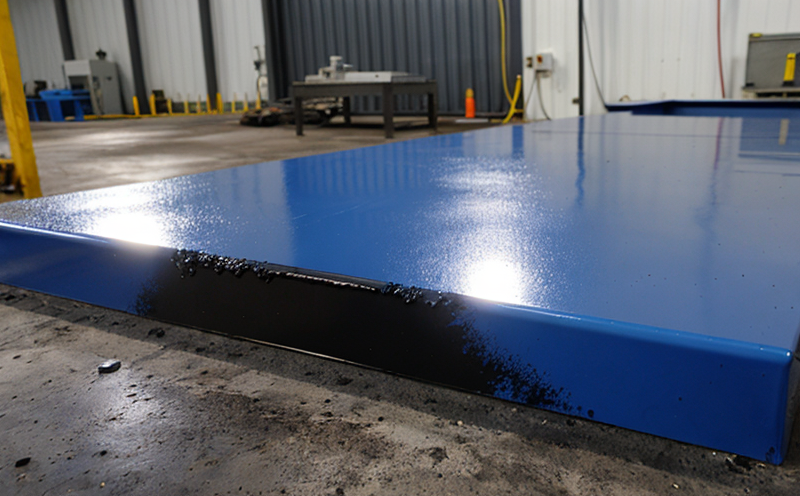ASTM B604 Corrosion Resistance of Electrodeposited Coatings
The ASTM B604 test method is a critical standard in the metallurgy and material testing sector, particularly for assessing the corrosion resistance of electrodeposited coatings. This standardized procedure ensures that materials meet stringent quality standards, thereby enhancing their durability and performance under various environmental conditions.
Electrodeposited coatings play an essential role in protecting metallic substrates from corrosive environments. These coatings can be composed of metals like nickel, chromium, zinc, or alloys, each offering unique properties depending on the application requirements. The ASTM B604 test evaluates how effectively these coatings perform against corrosion by simulating real-world conditions through controlled exposure to aggressive environments.
The testing process involves preparing specimens according to precise specifications outlined in the standard. Once prepared, samples undergo immersion or cyclic salt spray tests designed to mimic corrosive atmospheres. During this phase, it is crucial to ensure that all variables—such as temperature, humidity levels, and duration—are strictly adhered to per ASTM B604 guidelines.
After exposure, the integrity of the coating is assessed visually or through quantitative measurement techniques such as weight loss analysis or cross-sectional scanning electron microscopy (SEM). The results provide insights into the protective capabilities of different coatings against various forms of corrosion. This information helps manufacturers make informed decisions about selecting appropriate materials and processes for specific applications.
Understanding the performance characteristics provided by ASTM B604 is vital for quality managers, compliance officers, R&D engineers, and procurement professionals involved in specifying and sourcing electrodeposited coatings. By adhering to this standard, industries can ensure consistent product quality across suppliers while maintaining regulatory compliance requirements.
- Environmental Factors: The test accounts for variations in temperature, humidity, and exposure time which significantly influence corrosion rates.
- Specimen Preparation: Samples must be cleaned thoroughly before testing to eliminate any external contamination that could affect results.
- Data Analysis: Quantitative methods like weight change measurements offer more reliable data than purely qualitative assessments.
International Acceptance and Recognition
The ASTM B604 standard enjoys widespread recognition within the metallurgy and material testing sector due to its rigorous methodology and consistent results. It is widely adopted by manufacturers, suppliers, and end-users globally who rely on this standardized approach for evaluating electrodeposited coatings.
Compliance with ASTM B604 not only enhances product quality but also facilitates easier market entry into international markets where regulatory bodies often require adherence to recognized standards. This global acceptance fosters greater trust among stakeholders, ensuring that products meet industry expectations and safety regulations.
Many leading organizations in sectors such as automotive manufacturing, aerospace engineering, and construction prioritize ASTM B604-compliant materials when specifying electrodeposited coatings for their projects. By incorporating this standard into procurement processes, these companies demonstrate commitment to excellence and reliability in material selection.
Environmental and Sustainability Contributions
- Eco-Friendly Materials: Electrodeposited coatings often utilize recycled materials or those with lower environmental impact, reducing waste generation during production processes. Energy Efficiency: The durability provided by robust coatings leads to longer component lifespans, minimizing frequent replacements and associated energy consumption.
Competitive Advantage and Market Impact
Adopting ASTM B604 ensures that your organization stays ahead of competitors by delivering superior quality products. Meeting this standard demonstrates commitment to excellence, which is increasingly important in today’s competitive marketplace where consumer trust is paramount.
By ensuring compliance with ASTM B604, businesses can gain a significant advantage over those who do not adhere to such stringent testing protocols. This alignment with internationally recognized standards enhances brand reputation and customer confidence, ultimately driving sales growth.
The use of this standard also opens doors to new market opportunities as more companies recognize the value of high-quality electrodeposited coatings for various applications. As environmental concerns continue to gain traction globally, being able to demonstrate adherence to such rigorous testing procedures can be a powerful differentiator in attracting environmentally conscious clients.





